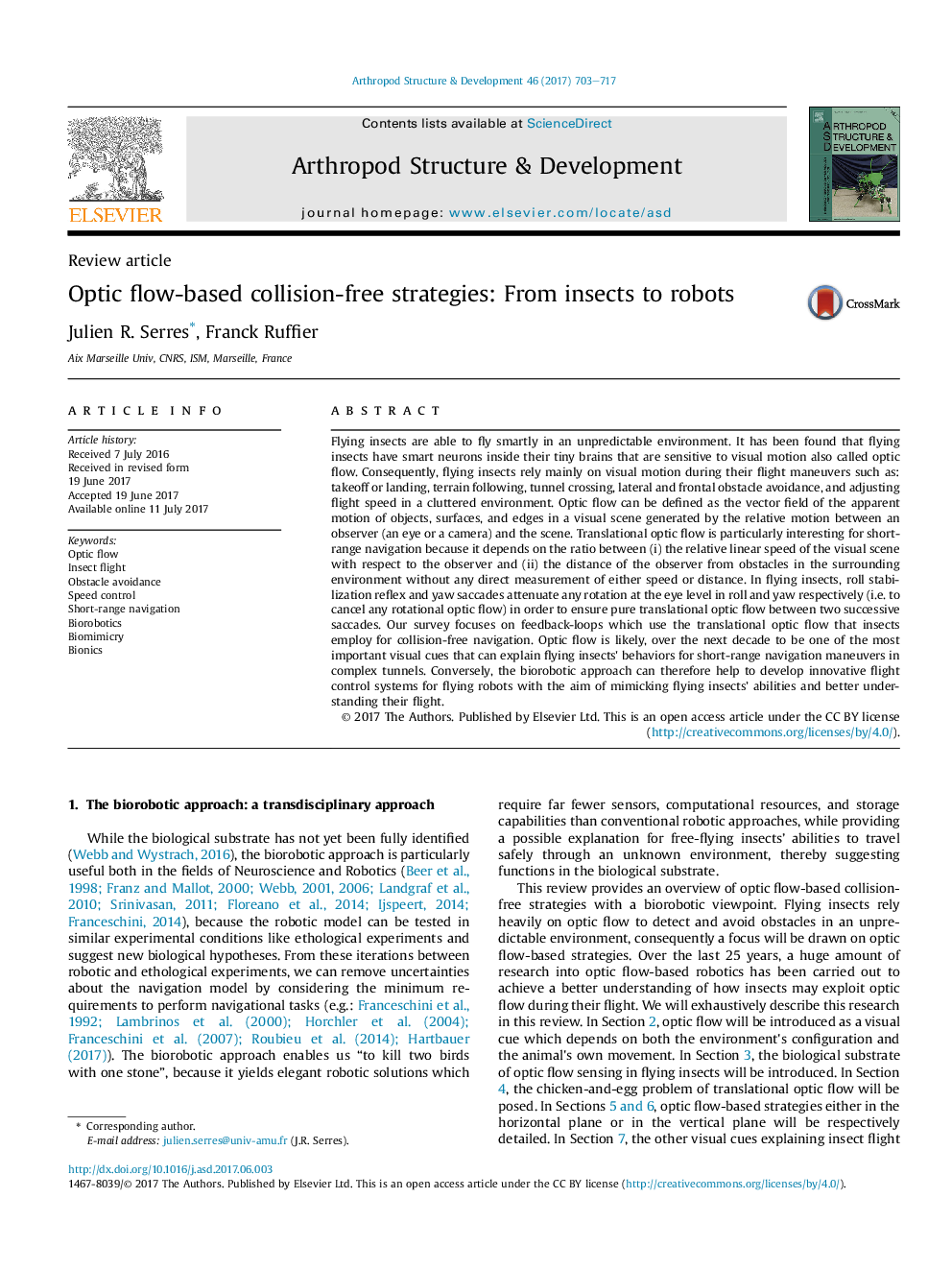| Article ID | Journal | Published Year | Pages | File Type |
|---|---|---|---|---|
| 5584978 | Arthropod Structure & Development | 2017 | 15 Pages |
Flying insects are able to fly smartly in an unpredictable environment. It has been found that flying insects have smart neurons inside their tiny brains that are sensitive to visual motion also called optic flow. Consequently, flying insects rely mainly on visual motion during their flight maneuvers such as: takeoff or landing, terrain following, tunnel crossing, lateral and frontal obstacle avoidance, and adjusting flight speed in a cluttered environment. Optic flow can be defined as the vector field of the apparent motion of objects, surfaces, and edges in a visual scene generated by the relative motion between an observer (an eye or a camera) and the scene. Translational optic flow is particularly interesting for short-range navigation because it depends on the ratio between (i) the relative linear speed of the visual scene with respect to the observer and (ii) the distance of the observer from obstacles in the surrounding environment without any direct measurement of either speed or distance. In flying insects, roll stabilization reflex and yaw saccades attenuate any rotation at the eye level in roll and yaw respectively (i.e. to cancel any rotational optic flow) in order to ensure pure translational optic flow between two successive saccades. Our survey focuses on feedback-loops which use the translational optic flow that insects employ for collision-free navigation. Optic flow is likely, over the next decade to be one of the most important visual cues that can explain flying insects' behaviors for short-range navigation maneuvers in complex tunnels. Conversely, the biorobotic approach can therefore help to develop innovative flight control systems for flying robots with the aim of mimicking flying insects' abilities and better understanding their flight.
